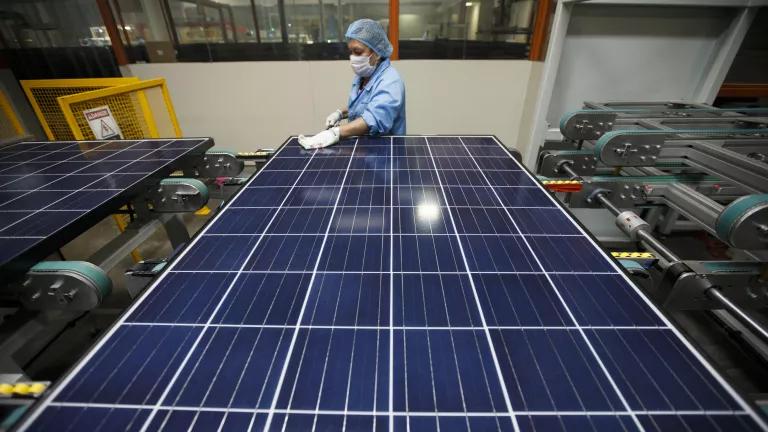A Regional Grid Will Help Us Deal with Western Heatwaves

It’s hot in the West. Very hot; and our electricity system is struggling like an old dog on a long walk. Heatwaves this time of year are not unusual. But the heat pummeling the Western U.S. is now part of a recognized trend in which they occur more often, last longer, and contribute to a range of impacts—including wildfires and terrible air quality—that put enormous pressure on the region’s power grid.
A regionally coordinated electric system would help us respond with the cleanest and lowest-cost power available across the West.
How bad is it? This week the California Independent System Operator (CAISO) has issued several “Flex Alerts” calling on consumers to save energy to keep the system from failing. If not enough energy is saved by utility customers, rolling blackouts may be needed as a last resort to prevent the grid from being unable to serve customer needs. One of the main reasons the CAISO resorted to Flex Alerts is the reduced amount of electricity available to the CAISO from elsewhere in the West to meet the region’s enormous air conditioning demand amid this heatwave.
That’s why we need a fully integrated western electric grid. The California Legislature is considering a bill (AB 813) to do just that, but more on that later.
What’s to blame?
As the National Oceanic and Atmospheric Administration (NOAA) points out, climate change is a main culprit
“In the Southwest United States warming due to human-caused climate change with higher temperatures and more heatwaves is already being observed and measured. And this warming is expected to continue with still longer and hotter summer heatwaves.”
Part of the reason there is seemingly not enough power to share is that the current heatwave is covering most of the West, and every grid operator (there are 38) in the western grid’s footprint that includes 14 western states, two Canadian provinces and one Mexican state, is pulling a very large amount of energy from their own power plants. Fair enough, the regional thirst for electricity is being slaked with just about any power plant that can disgorge some electrons. But meeting local demand is not the only reason energy imports to California are being limited.
According to the North American Electricity Reliability Council (NERC), a range of 20 to 40 percent reserve power should be able to be called upon throughout the region, for high demand times like a heatwave, depending on the sub-region. Considering these high electricity reserves that should be available region-wide, the grid should be able to manage even in this extreme heat, right?
Theoretically. If all regional electricity resources were being used as efficiently and smoothly as possible, with a minimum of manual coordination, handling these demand spikes would be much easier. But that’s not how the system is operated right now and why we need to regionalize the operations of the grid. The West’s 38 different balancing areas (like a bus with 38 drivers) prevent such smooth operation, making regional energy sharing more expensive and difficult.
There’s a solution
Oh, and did I mention that a larger regionally integrated grid operator would probably better manage and respond to forced outages of power plants during the summer? It would. A regional system operator has an instantaneous view of grid conditions and problems and can immediately route power around power stations that unexpectedly fail, as happens in every other part of the country with Regional Transmission Operators.
An integrated western grid also would facilitate the use of electricity storage, demand response (compensating customers for reducing their energy use during specific periods to help take the pressure off the grid), and other effective tools for managing power needs during heatwaves. If you cannot increase the generation, you must reduce energy consumption or blackouts will occur. Through its automated dispatch system, a regional system operator can more effectively call on these pre-identified resources to respond when they are needed most.
Finally, a regional grid operator would call on the lowest-cost (and thereby cleanest because renewable fuels like wind and sunlight are free) energy resources available to meet needs during heatwaves. This means renewable power will get used to the maximum extent possible, lowering the carbon cost of handling climate and weather-related crises. That means cleaner air and cool homes at the same time.
The California Legislature will be deciding in the coming weeks whether to authorize the CAISO to take steps to expand into just such a regional system operator via AB 813. Given that these heatwaves are becoming the new normal, lawmakers should take this opportunity to make the electricity system better able to handle climate-induced emergencies.



